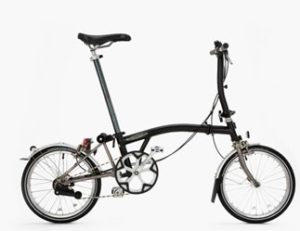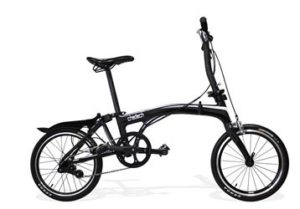The CJEU confirms copyright can subsist in functional shapes provided they are original
12.06.2020
The Court of Justice of the European Union (“CJEU”) handed down its decision in the much-anticipated Brompton Bicycle case (C-833/18) on 11 June 2020.
In a succinct ruling, the CJEU confirmed that copyright can subsist in functional shapes but only where the subject matter in question passes the test for originality and not in instances where the product’s shape is solely dictated by its technical function. The decision is a development on the recent Cofemel decision (C-683/17), and both decisions have a significant effect on the approach to copyright in the UK (for the time that the UK continues to apply EU law).
Background
| Brompton Bicycle: | Get2Get Bicycle: |
 |
 |
The main feature of the Brompton bicycle is its folding mechanism which allows it to take 3 positions; unfolded, stand-by and folded while remaining balanced upright. This folding mechanism was previously protected by a patent which was owned by Brompton but has since expired. Get2Get has since begun selling a bicycle with a similar shape (see above).
Brompton sued Get2Get in Belgium for copyright infringement of the Brompton bicycle’s design. In response, Get2Get submitted that since the shape of the Brompton bicycle is dictated purely by its technical solution (i.e. being able to take 3 positions while maintaining balance), the bicycle did not qualify for copyright protection. The Belgium court sought guidance from the CJEU about whether shapes necessary to achieve technical result were excluded from copyright protection.
Can functional shapes be original works for the purposes of copyright?
The starting point in the CJEU’s decision is the established case law on the concept of a ‘work’ as recently set out in Cofemel. The key requirement for a work to be eligible for copyright protection is whether the subject matter can be regarded as original.
Cofemel confirmed that in order to be considered original, ‘it is both necessary and sufficient that the subject matter reflects the personality of its author, as an expression of his free and creative choices’.
Clearly, if the subject matter is completely dictated by technical considerations and has left no room for creative freedom, the subject matter cannot be considered original (Cofemel). However, the CJEU yesterday confirmed that copyright may still exist in cases where a subject matter’s “realisation has been dictated by technical considerations, provided that its being so dictated has not prevented the author from reflecting his personality in that subject matter, as an expression of free and creative choices”.
There is no doubt that the Brompton bicycle’s shape is necessary to obtain a technical result, however the court has made clear that this does not rule out copyright subsisting where the author, in designing the Brompton bicycle, has expressed free and creative choices.
How to determine if the subject matter is original
Unlike the AG’s opinion which was published in February, the CJEU’s judgment did not provide much analysis of, or guidance on, the factors to be considered when an assessment of originality is undertaken, nor did it rank the importance of the factors listed in the second question referred. Instead, the CJEU has confirmed that it is necessary for the court “to take account of all the relevant aspects of the present case” and two of those factors that should be taken into account in revealing what was considered in choosing the shape of the subject matter are the effectiveness of the chosen shape in achieving the desired result and the existence of any earlier rights.
Another useful indication made by the Court is that the existence of other possible shapes may be helpful in establishing that there was opportunity for creative choice in the design but should not be decisive. One of Brompton’s arguments is that the three positions of their bicycle are achievable by other shapes and that there are other folding bicycles on the market, so they will be hoping that the Belgium Court places heavy weight on this factor.
Finally, Copyright practitioners across the EU will welcome the news that the CJEU has deviated from the AG’s opinion and confirmed that both the intention of the author and the intention of the alleged infringer are irrelevant when assessing originality.
Possible implications in the UK
The Brompton judgment confirms that copyright can subsist in functional shapes but the enforceability of such a right in the UK remains unclear. It also creates possible issues where design rights and copyright cross-over.
Traditionally, functional shapes would be protected by unregistered design rights in the UK and not copyright. In fact, Section 51 of the Copyright, Designs and Patents Act 1988 (“CDPA”) works to prevent copyright which subsists in a design document for articles or models, from being enforced unless the subject matter produced is an artistic work. Since very few would argue that the Brompton bicycle is an artistic work, even if copyright was deemed to subsist in the Brompton bicycle, under the CDPA it would likely not be enforceable in the UK due to this section, which restricts the enforceability of copyright in designs for anything other than artistic works. Therefore if the article design is functional, copyright will not be enforceable and the claimant will need to rely on unregistered design rights if eligible.
This situation is further complicated by Cofemel which ruled that subjective requirements (such as a work of artistic craftsmanship needing to have aesthetic appeal) to qualify for protection do not conform with EU copyright law.
The UK’s current S. 4 CDPA ‘closed list’ of eligible copyright works is arguably incompatible with EU law, although HHJ Hacon in his recent Edinburgh Woollen Mill decision ([2020] EWHC 148 (IPEC)) managed to avoid going so far as to rule on that point. If UK courts follow Cofemel and interpret artistic works non-restrictively, as well as circumventing S. 4 and the requirements for aesthetic appeal or craftsmanship, there is likely to be a knock-on effect for S. 51. It may no longer provide a barrier to enforcing copyright in certain non-aesthetic 3D designs since there would be no subjective hurdle to pass in proving the subject matter is an artistic work.
Potentially a much wider range of works could be enforced as copyright works in light of both Cofemel and Brompton. The implications go broader still. It may also reduce the necessity of the unregistered design right in the UK which was intended to provide protection in exactly this kind of situation where the design for an article was not artistic per se and it was considered copyright ought not to be enforceable. If designers can rely on copyright for their partly functional designs, unregistered rights will be relied on only where designs are purely functional.
However, it remains to be seen exactly how the UK courts will apply Brompton and Cofemel, particularly in the context of Brexit. It is possible that artistic appeal and this inter-play between designs and copyright may be one of the first areas in which we see divergence by the UK Courts from EU law, if only to prevent significant amendments to the CDPA being required. Until that happens, the current position in the UK is that copyright owners have an expanded landscape, which has not yet been judicially determined, to enforce their copyright works.

Jeremy Blum
Author

Sara Witton
Author

Will Hewitt
Author
